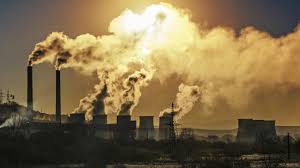A recent report has revealed a 40% increase in human emissions of the potent greenhouse gas nitrous oxide (N2O) over the past 40 years. Emissions of this gas will need to be reduced by more than 20% by 2050 in order to meet global climate targets. Australia is currently exploring ways to address N2O emissions in its agricultural sector.
Findings from the second-ever global nitrous oxide budget indicate that the rate of N2O emissions growth is rising, with agriculture being a significant source. N2O, also known as the “forgotten greenhouse gas,” has a warming potential 300 times greater than that of carbon dioxide (CO2). It is commonly used as a medical anaesthetic and recreational drug, but its production as a by-product of nitrogen-based fertiliser use has made it a major contributor to greenhouse gases.
According to Pep Canadell, CSIRO environment chief research scientist and co-author of the report, N2O is accumulating at an accelerating rate. Emissions are growing 30% faster than in the previous decade. The increase in emissions is dangerous not just for the amount produced, but also for the increase in emissions resulting from a warmer earth. Despite some of these emissions coming from natural sources like tropical forest soils, the majority of N2O emissions influencing climate change are anthropogenic or resulting from human activity.
Joeri Rogelj, a climate scientist at Imperial College London not involved in the new study, affirmed the authority of the report on N2O sources and sinks. Rogelj, also a lead author for the Intergovernmental Panel on Climate Change’s sixth report, states that N2O emissions need to decrease by about 20 to 25 per cent by 2050 to align with the Paris Agreement goal of keeping global warming below a 2C increase.
Rogelj also stressed the importance of the agricultural sector, which is currently the dominant contributor of N2O emissions and continues to increase. He emphasized the need for sharing and applying best practices to reduce emissions. While some countries have successfully reduced their N2O emissions, such as European countries (excluding Russia) which have cut emissions by 31% since the 1980s, these reductions have been offset by increases elsewhere, like China and South Asia.
Researcher Peter Grace from Queensland University of Technology states that the rise in N2O emissions is mainly due to the increased use of nitrogen fertilisers for food production to feed an expanding global population. Global population growth from 3.08 billion people in 1961 to 7.7 billion in 2019 was matched by a 95% rise in nitrogen fertiliser production, increasing from 12.94 million tonnes to 122.74 million tonnes per year. Some countries have begun to respond to this issue by introducing fertiliser emission targets or usage caps.
While Australia is not one of the largest N2O emitters globally, discussions are underway on reducing emissions for crops such as sugar cane, which require a significant amount of nitrogen fertiliser. Although efforts are being made to increase nitrogen-use efficiency, these methods often come at a cost to growers, limiting their adoption. The Australian federal government’s plans to reduce greenhouse gases from the agricultural and land sector are still to be announced.
Original Story at www.abc.net.au
